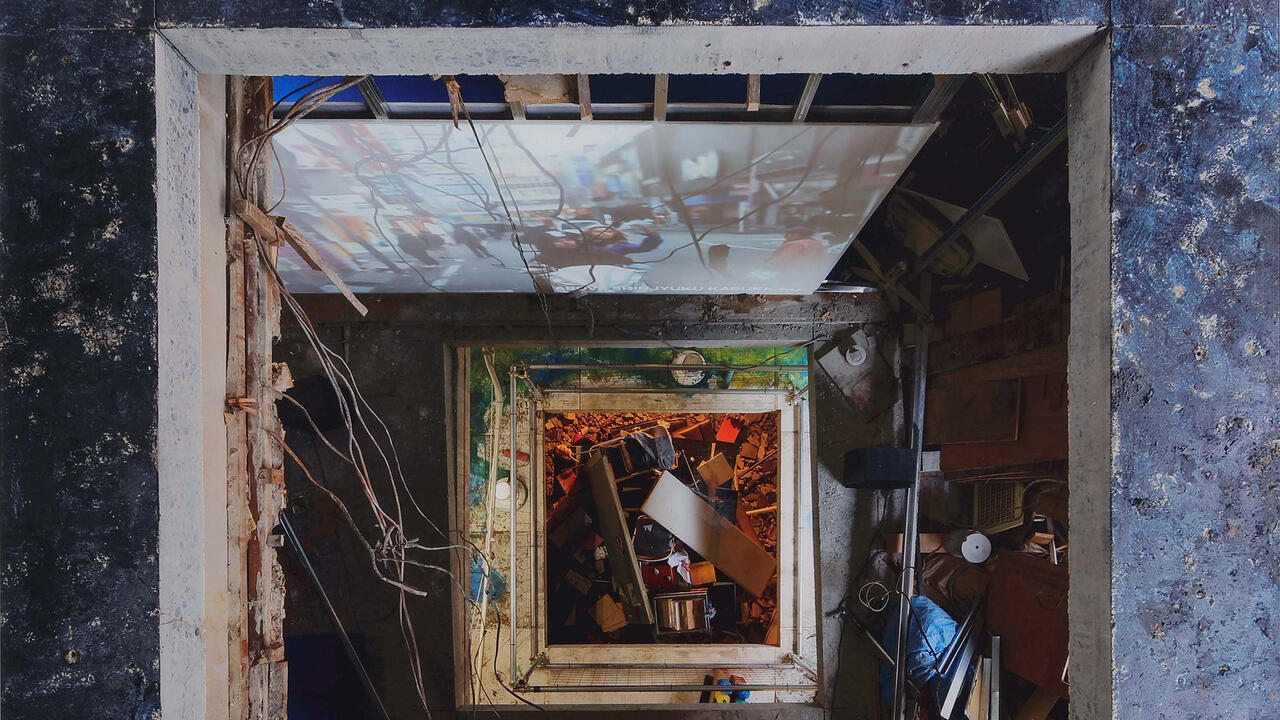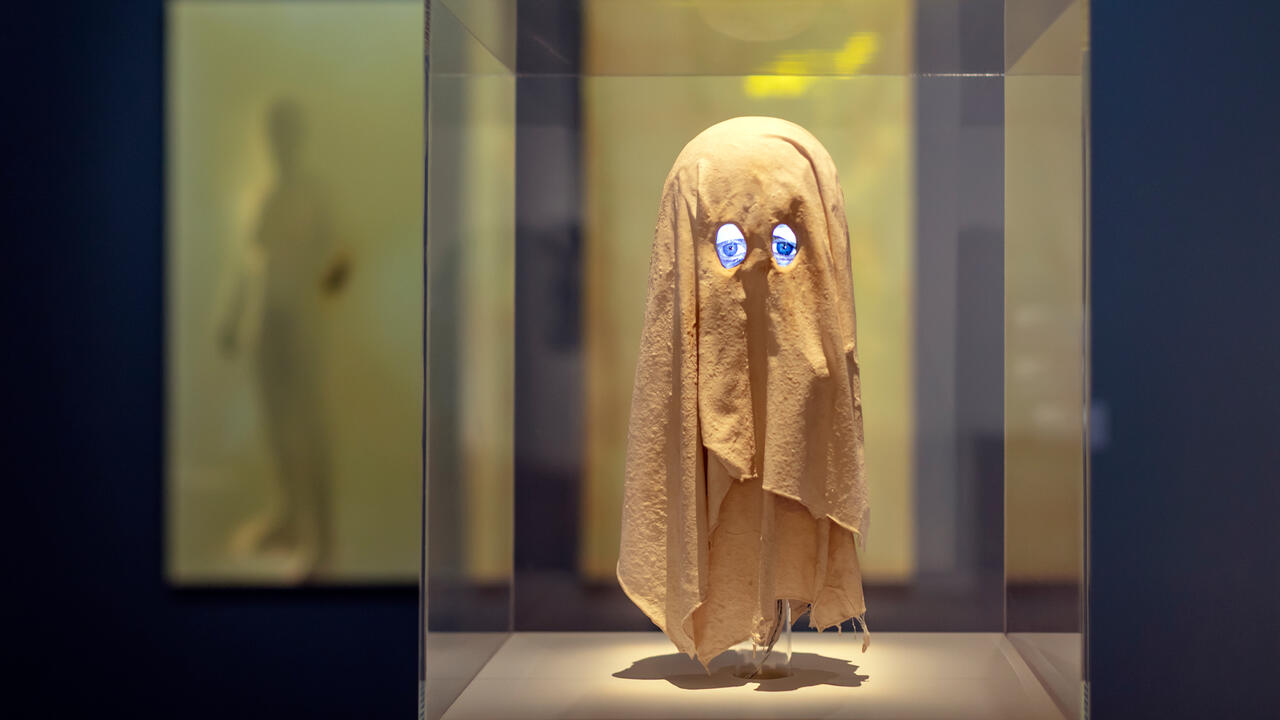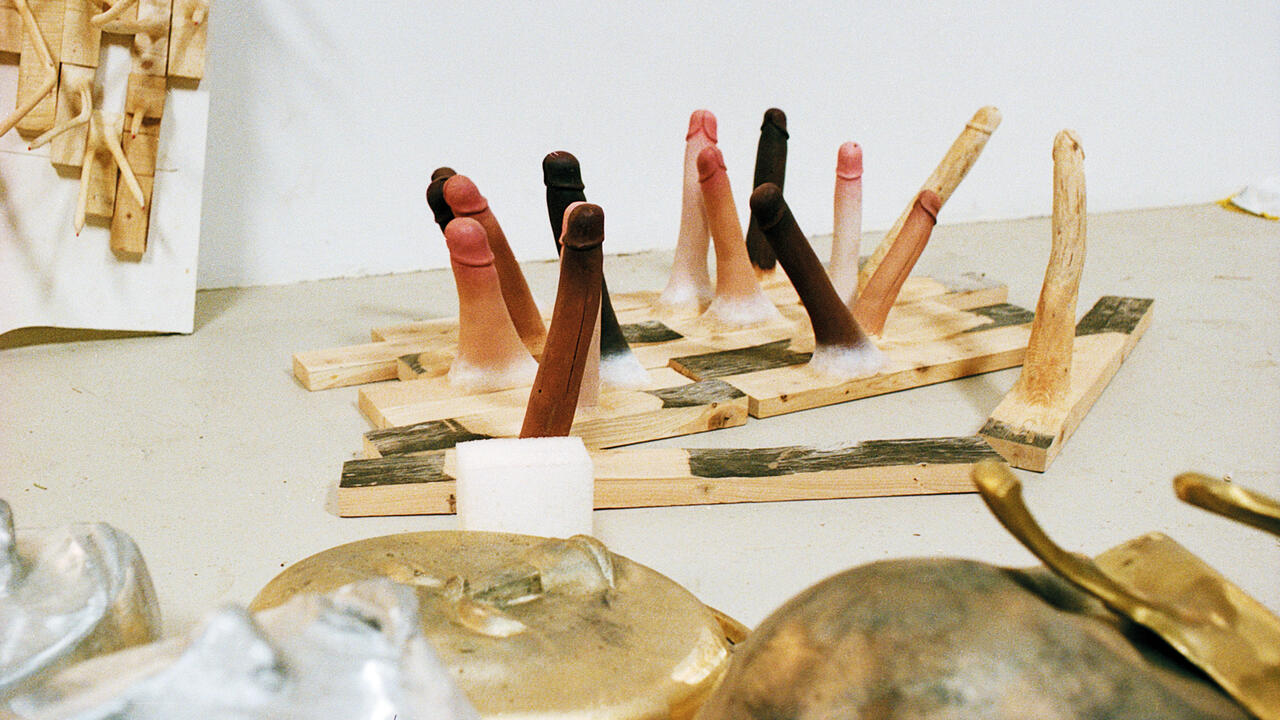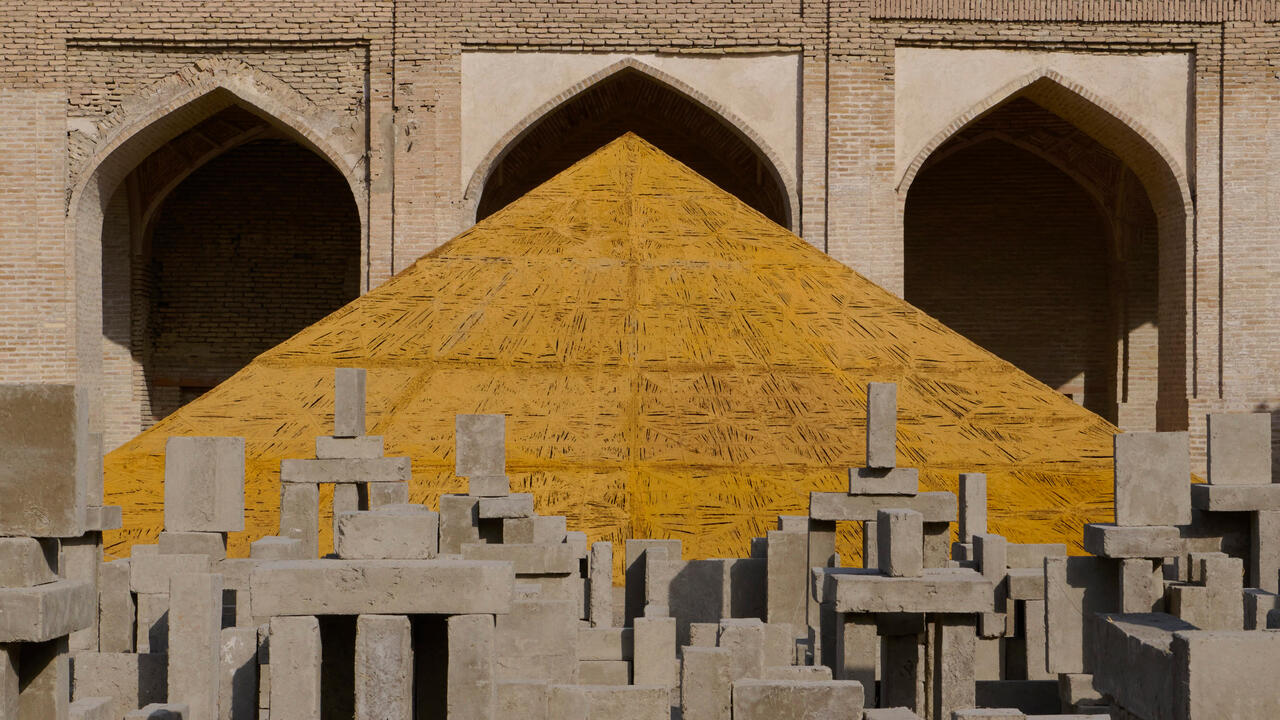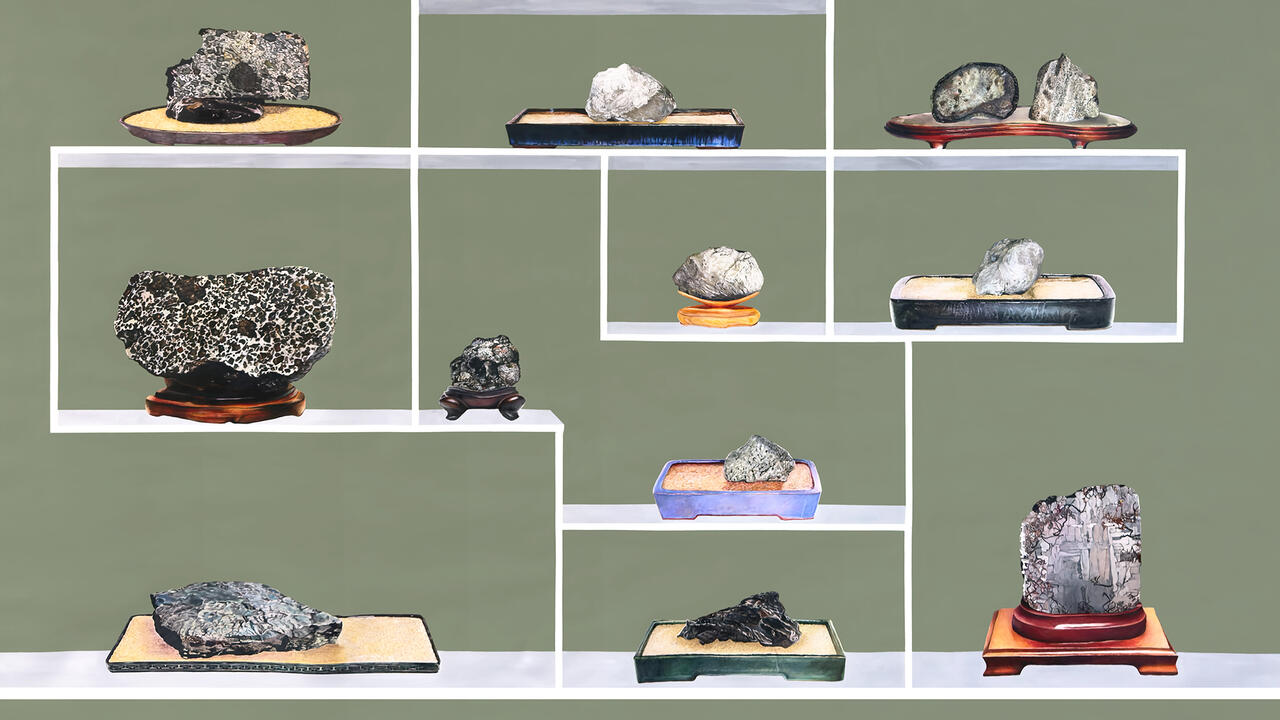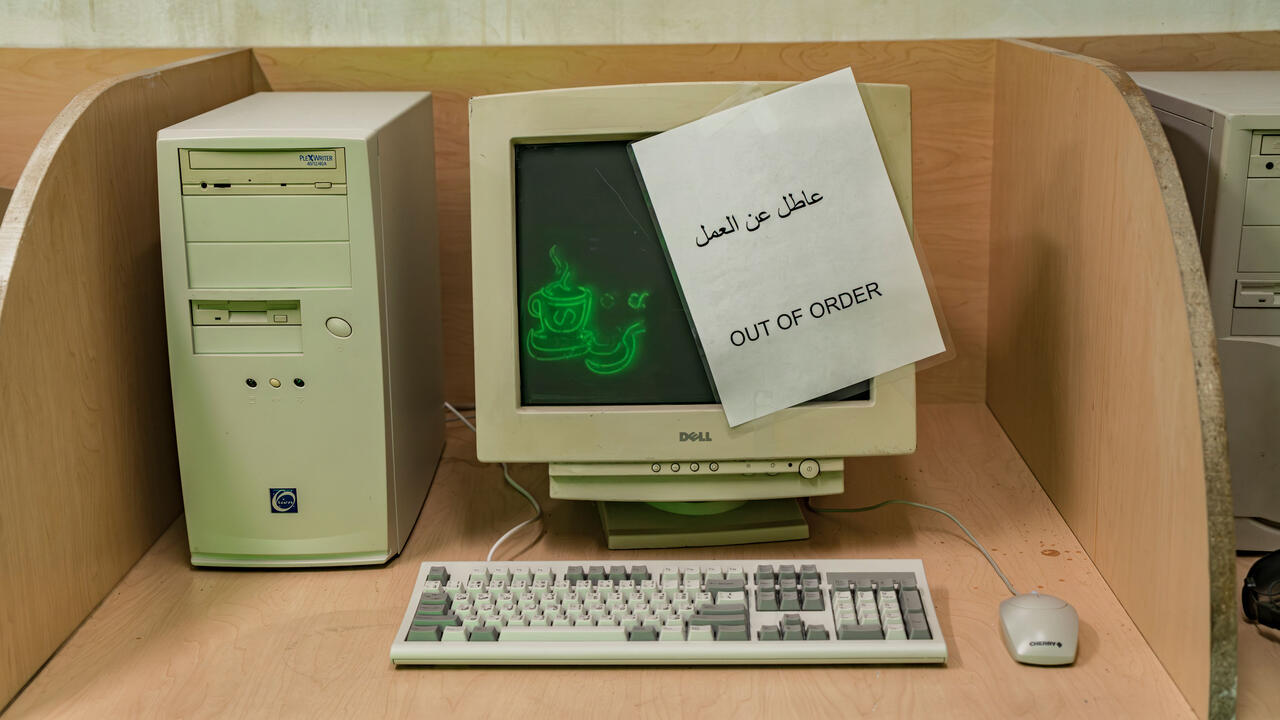32nd Bienal de São Paulo
First impressions of the biennial which focuses on the uncertainty of today’s world
First impressions of the biennial which focuses on the uncertainty of today’s world





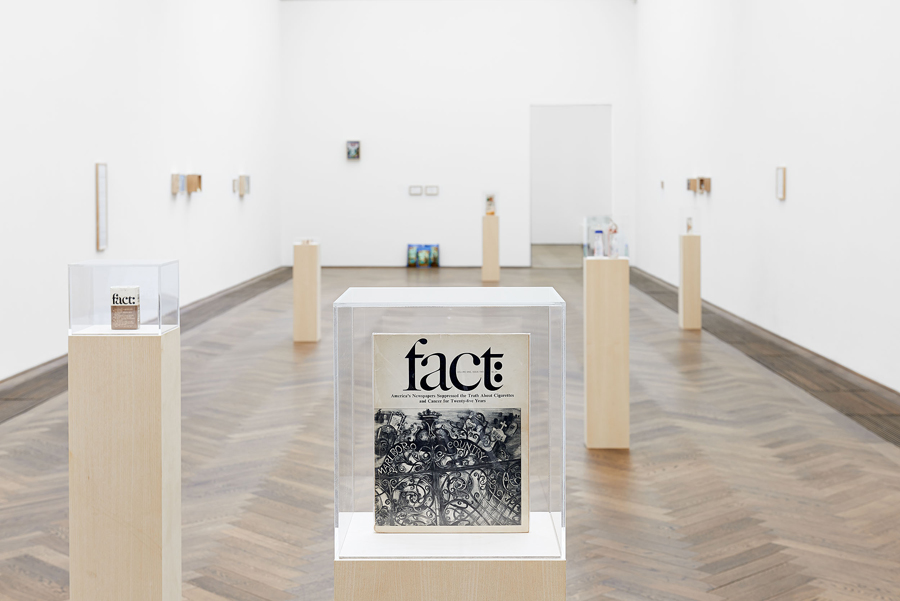



These days there are many people certain about how the world should run. Donald and his Trumps. The Brexit blowhards. The King Canutes of climate change, deluding themselves they can command global sea levels to drop. Their certainty festers in fear and resentment. Or, as W.B. Yeats put it: ‘The best lack all conviction, while the worst / Are full of passionate intensity.’ The curators of the 32nd Bienal de São Paulo appear to be with Yeats, and have a long shopping list of doubts. Titling their exhibition ‘Incerteza Viva’ (Live Uncertainty), they hold that ‘in order to confront the big questions of our time objectively, such as global warming and its impact on our habitats, the extinction of species and the loss of biological and cultural diversity, rising economic and political instability, injustice in the distribution of the earth’s natural resources, global migration and the frightening spread of xenophobia, it is necessary to detail uncertainty from fear.’ I’m certainly worried sick just thinking about it.
Art is a field in which uncertainty is welcome. Ambiguity, chance, and improvisation are all valued qualities in the creative process. A willingness to stumble through the dark is vital for artists to make leaps of imagination, or develop idiosyncratic approaches to research. Even the simple choice to work in collaboration with other creative minds is a decision to embrace the unknown. Jochen Volz, together with co-curators Gabi Ngcobo, Júlia Rebouças, Lars Bang Larsen and Sofia Olascoaga, have put together an engaging, modest, polyphonic biennial that aims to map these principals onto politics and society. Like any leap into the unknown, it sometimes comes a cropper – there are passages in the show that evanesce into mystic abstraction, or would be more at home as didactic exhibits in a natural history museum – but ‘Incerteza Viva’ also stamps the mind with stark, indelible images of social upheaval and ecological brinksmanship. Featuring 84 artists and artist groups, largely from Latin America, it’s a biennial that avoids the usual marquee names, favouring younger or lesser-known participants. It’s a show in which you’ll see a lot of earth, fungi, insects, handmade objects, anthropological dabbling in rural areas or small towns. It’s a biennial for when the lights go out, the server farms crash, and your aluminium-cased laptop is good for nothing other than patching a leaky hole in the roof.
Even if this biennial worries itself with end-of-the-world undertones, it manages to avoid the political nostalgia trap that has made so many large exhibitions in recent years so interminable. You know the kind of show: vitrine after vitrine of archival photographs recording an ‘action’ in some German kunsthalle circa 1972, its insurgent significance explained to death by the curators with all the seditious excitement of taking Ambien in order to watch paint dry. Viewing shows such as those in the relative comfort of the West was always a queasy, self-congratulatory experience, even before financial meltdown, the refugee crisis and the rapidly accelerating demise of our planet. But today, the sense that political systems the world over are fucked has never – at least for Westerners from the northern hemisphere such as me – been so palpable. Biennials drenched in the terminology of ‘subversion’, ‘interrogation’, ‘revolution’, ‘boundary breaking’ and ‘rebellion’ but with none of the realpolitik, just look like play-acting when things start to actually get real – when you really can be beaten up for subversion or interrogated and thrown in jail because of your work. (Just look at the numbers of journalists and artists who have been arrested in Turkey following the recent failed coup.) The day before this year’s São Paulo Bienal opened, a reported 50,000 people marched through the streets of the city in protest at the impeachment of ex-president Dilma Rousseff and her replacement by the conservative Michel Temer. During the press preview of the show, in an act of collective protest organized by the group Opavivará, participating artists wore black-and-white T-shirts demanding Temer stand down and for elections to be held. Politics and the São Paulo Bienal have long been intertwined, but the politics are squeezing harder than ever before.
An extended review of the biennial will appear in the November/December issue of frieze. In the meantime, here are five of my highlights, given to you with the caveat that to be a critic, you’re always living with the uncertainty that any of your opinions will be worth anything at all:

Jonathas de Andrade, O peixe (The Fish) (2016)
‘Incerteza Viva’ features a number of works influenced by ethnographic documentary film, and depicting indigenous peoples. The ethics of this cinema have been contested for decades, and any artist taking it on today has to know what thorny debates about representation they’re getting themselves into. Jonathas De Andrade’s new film, O peixe (The Fish), is filmed in the state of Algoas, in the northeast of Brazil, and depicts local fishermen at work. He shows them catching the fish, then caressing them in their arms, gently stroking the creature’s scales as they asphyxiate. The images are disturbing, and the film’s atmosphere suggests that this is a traditional ritual, a primitivist fantasy of fishermen honouring the symbiotic relationship between humans and nature. Yet all is not as it seems, and De Andrade builds tension between those scenes that are pure documentary, and those in which a fiction is playing out, in which the erotic gaze of De Andrade’s camera ovewhelms the factual record of death.

Eduardo Navarro, Sound Mirror (2016)
A wooden stool is placed next to one of the tall glass walls in Oscar Niemeyer’s biennial pavilion. A brass tube, at roughly ear height if you’re sitting on the stool, snakes out through the window and flowers into a giant ear trumpet, or Victrola horn, pointing into the leaves of a tall palm tree. Speak to the tree or listen to it –you never know what you might learn.

Ruth Ewan, Back to the Fields (2015–16)
Many projects in this year’s biennial look to nature for models of survival and organization. (What could be more anthropocenic than plundering the natural world for ideas as well as resources?) In Back to the Fields, Ruth Ewan speculates how human agriculture might alter if we changed our systems of marking time. She takes the French Republican Calendar, imposed during the tumultuous revolutionary years in France from 1793 to 1805, and uses it to map out a year-long cycle, divided into four quarters, on wooden platforms. Each month – from Vendemiaire, at the autumn equinox (what we call September), through to Fructidor (mid-to-late August) – is divided into three ten-day weeks, and each day is assigned a plant or object, carefully catalogued and arranged by Ewan on the platforms. (The 5th of Thermidore, for instance, is a fearsome-looking ram’s skull.)
Back to the Fields looks a little like an occult game to be played in a gardening shop, but it’s a reminder of the arbitrary values we place on plants, animals and the passing of each day.

Bárbara Wagner & Benjamin de Burca, Estás vendo coisas (You Are Seeing Things) (2016)
Estás vendo coisas (You Are Seeing Things) is shot in Recife, and depicts the making of videos for the city’s brega music scene. Wagner and De Burca’s film depicts a complex subculture: one that’s characterized by wild fashions, escapist dreams, and chauvinist attitudes. This portrait of a scene switches between fantasy and documentary, along the way suggesting how brega provides an identity for the performers, a respite from the economic realities of their lives in northeast Brazil.

Dineo Seshee Bopape, :indeed it may very well be the ________ itself (2016)
A set of dark, heavy, compressed soil blocks is arranged in loose groupings. Embedded in shallow depressions on top of the blocks – echoes of African Morabaraba and Diketo games – are gold leaves, flower petals, herbs, and ceramic casts made with a fist. It’s a simple yet affecting meditation on the occupation of land and displacement from it, of memory and earth, and the precarious relationship that communities have to the ground beneath our feet.
Also noted:
Lais Myrrha, Dois pesos, duas medidas (Double Standards), 2016 (you can’t miss them – two giant towers rising through the floors of the pavilion); Pierre Huyghe, De-Extinction, 2016, (without giving too much away, I’ll be curious to know how bad the fly problem gets inside the biennial pavilion during the course of the show); Hito Steyerl, Hell Yeah Fuck We Die, 2016 (features a soundtrack by Kassem Mosse, and wild footage of disaster relief robots in experimental development); Luiz Roque, HEAVEN, 2016 (an intriguing sci-fi short); Maryam Jafri, Product Recall: An Index of Innovation, 2014–15 (ever wondered what happened to Pepsi-Cola in bottles for babies? Now’s your chance); Vivian Caccuri, TabomBass, 2016 (a bass-heavy sound-system, developed out of research into the Brazilian diaspora to Ghana, and made in collaboration with musicians in Accra); Wilma Martins, works from the series Cotidiano (Everyday), 1983 (a quiet, elegant and disquietingly surreal set of paintings and drawings set in domestic environments: buffalo charging across the plains of a bedspread, for example, or a wild forest growing from the needle of a sewing machine); Wladimir Dias-Pino, Enciclopédia Visual Brasileira (Brazilian Visual Encyclopedia), 1970–2016 (an eye-popping selection of images by the 89-year old artist, poet, graphic designer and window dresser).
Main image: Alicia Barney, Valle de Alicia (Valley of Alicia), 2016, metal, wood, paper, PVC, acrylic emulsion, dimensions variable. Commissioned by the Fundação Bienal de São Paulo for the 32nd Bienal, 2016. Photograph: Leo Elroy. All images courtesy: Fundação Bienal de São Paulo.









